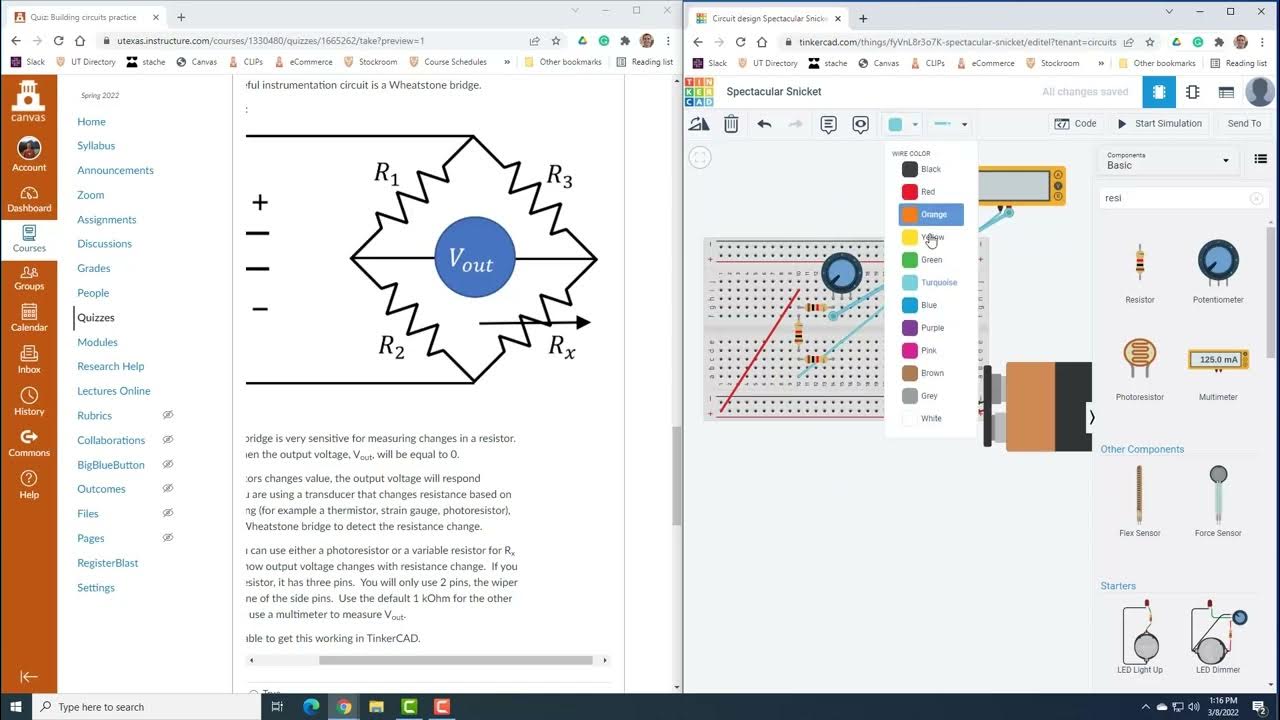How to test a load cell
Summary
TLDRThis video demonstrates how to test a four-wire load cell, which uses a Wheatstone bridge circuit with a strain gauge as the sensing element. The procedure involves measuring the resistance of the load cell using a multimeter. The resistance of the strain gauge should be around 350 ohms when no load is applied, and the opposite resistance should be equal to ensure a balanced Wheatstone bridge. The output voltage is measured when a load of 2500 pounds (1134 kg) is applied, which should yield an output of 30 millivolts. The video provides a clear and educational guide on testing load cells.
Takeaways
- 😀 A four-wire load cell is connected to a Wheatstone bridge circuit, with the strain gauge as the sensing element.
- 😀 The strain gauge converts pressure or weight into resistance, which is used for measurement.
- 😀 The load cell has four wires: 1 and 2 for the strain gauge, and 3 and 4 for the opposing resistance.
- 😀 A multimeter is used to measure the resistance of the load cell to ensure proper functionality.
- 😀 The datasheet specifies that the resistance of the strain gauge should be 350 ohms when there is no load.
- 😀 The resistance of the opposing resistance (wires 3 and 4) should also ideally be 350 ohms when no load is applied.
- 😀 If the resistances are balanced, the Wheatstone bridge circuit should have an output voltage of zero between wires 1 and 3.
- 😀 The load cell is tested by comparing the resistance values to check if the Wheatstone bridge is balanced.
- 😀 When a load of 2500 pounds (1134 kg) is applied, the load cell should output 30 millivolts according to the datasheet.
- 😀 Proper testing of the load cell ensures it is working correctly, with resistance balance and expected output under load.
- 😀 The video encourages viewers to like and subscribe for more similar informative videos.
Q & A
What is the primary function of a load cell?
-A load cell converts pressure or weight into resistance, which can then be measured to determine the load applied.
How does a strain gauge work in a load cell?
-The strain gauge in a load cell changes its resistance in response to pressure or weight, which allows it to sense the amount of load applied.
What is the role of the Wheatstone bridge circuit in testing a load cell?
-The Wheatstone bridge circuit balances the resistances of the load cell, ensuring accurate voltage readings that reflect the applied load.
What is the typical resistance of the strain gauge when there is no load applied?
-The resistance of the strain gauge is typically 350 ohms when there is no load applied.
What do wires 1 and 2 in a four-wire load cell connect to?
-Wires 1 and 2 are connected to the strain gauge, which is the sensing element in the load cell.
What is the function of wires 3 and 4 in a four-wire load cell?
-Wires 3 and 4 are connected to the opposite resistance element, which helps balance the Wheatstone bridge circuit.
What should the resistance between wires 1 and 3 ideally be when the Wheatstone bridge is balanced?
-The resistance between wires 1 and 3 should ideally be zero when the Wheatstone bridge is balanced.
How is the output voltage affected when a load is applied to the load cell?
-When a load is applied, the resistance in the strain gauge changes, causing the Wheatstone bridge to output a corresponding voltage, which can be measured. For example, applying a load of 2500 pounds produces an output of 30 millivolts.
What is the expected output voltage when a load of 2500 pounds is applied?
-The expected output voltage when a 2500-pound load is applied is 30 millivolts, according to the load cell's data sheet.
What tools are required to test a four-wire load cell?
-A digital multimeter is required to measure the resistance between the wires of the load cell.
Outlines

Dieser Bereich ist nur für Premium-Benutzer verfügbar. Bitte führen Sie ein Upgrade durch, um auf diesen Abschnitt zuzugreifen.
Upgrade durchführenMindmap

Dieser Bereich ist nur für Premium-Benutzer verfügbar. Bitte führen Sie ein Upgrade durch, um auf diesen Abschnitt zuzugreifen.
Upgrade durchführenKeywords

Dieser Bereich ist nur für Premium-Benutzer verfügbar. Bitte führen Sie ein Upgrade durch, um auf diesen Abschnitt zuzugreifen.
Upgrade durchführenHighlights

Dieser Bereich ist nur für Premium-Benutzer verfügbar. Bitte führen Sie ein Upgrade durch, um auf diesen Abschnitt zuzugreifen.
Upgrade durchführenTranscripts

Dieser Bereich ist nur für Premium-Benutzer verfügbar. Bitte führen Sie ein Upgrade durch, um auf diesen Abschnitt zuzugreifen.
Upgrade durchführenWeitere ähnliche Videos ansehen
5.0 / 5 (0 votes)






